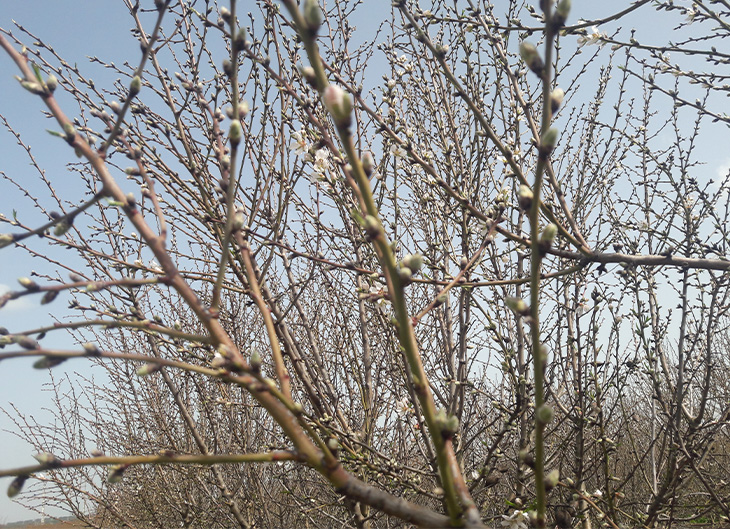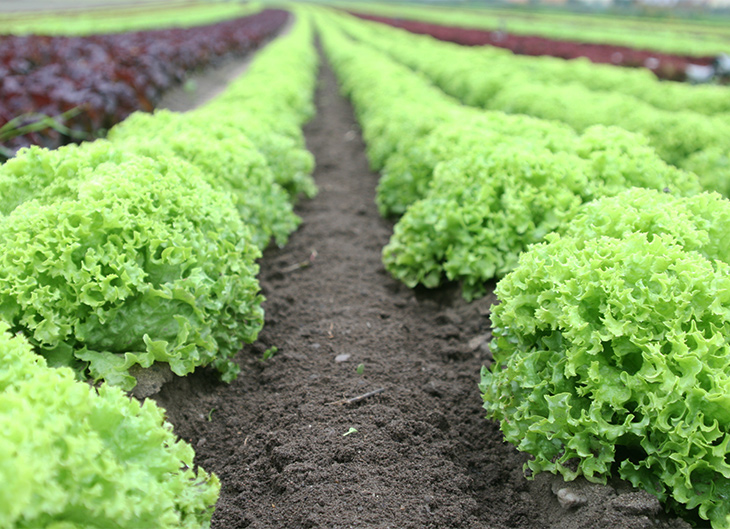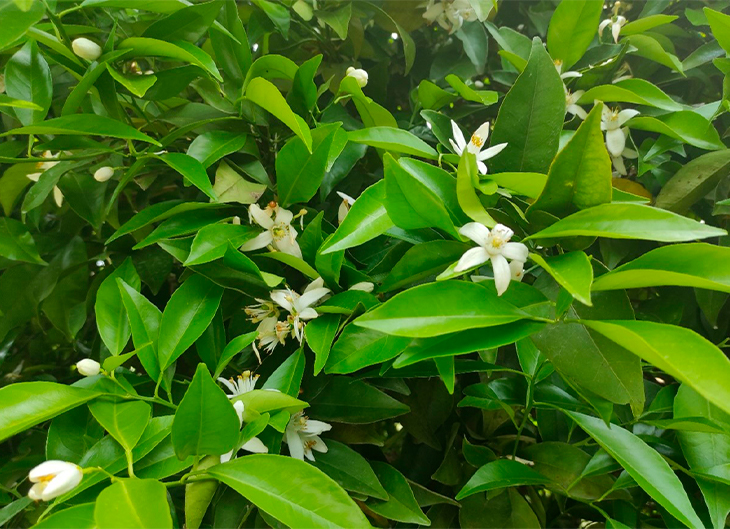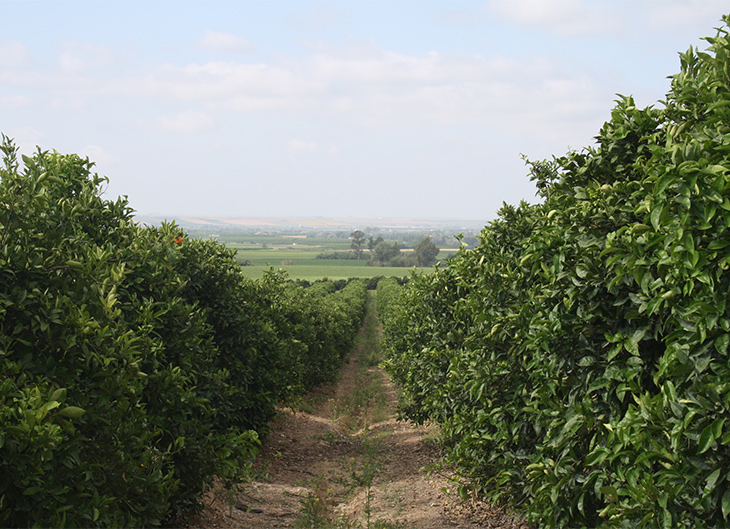
Versatile Lanzadera® 3 (Zn, Mn, Mg) technology: More direct nutrition
The productivity we seek in our citrus plantations can be achieved from an adequate nutritional state of the plants, especially in essential nutrients among other factors, which is necessary for good growth and physiological development during the different phenological states.
Each nutrient, as with Zinc, Manganese and Magnesium, plays a specific role in vegetative development and citrus production.
Zinc is a micronutrient that interacts as a cofactor in the synthesis of certain proteins: alcohol dehydrogenase, superoxide dismutase, carbonic anhydrase, ARM polymerase, etc. Plants use this element for the formation of chlorophyll and some carbohydrates, being fundamental in the synthesis of Tryptophan, a precursor amino acid of indolacetic acid, and intervening in the control of development through its indirect action on the metabolism of auxins.
Zinc deficiency is characterized by the formation of yellowish areas around the secondary nerves of the leaves. They are more intense the more pronounced the deficiency, presenting themselves in the young leaves in spring in the Mediterranean basin.
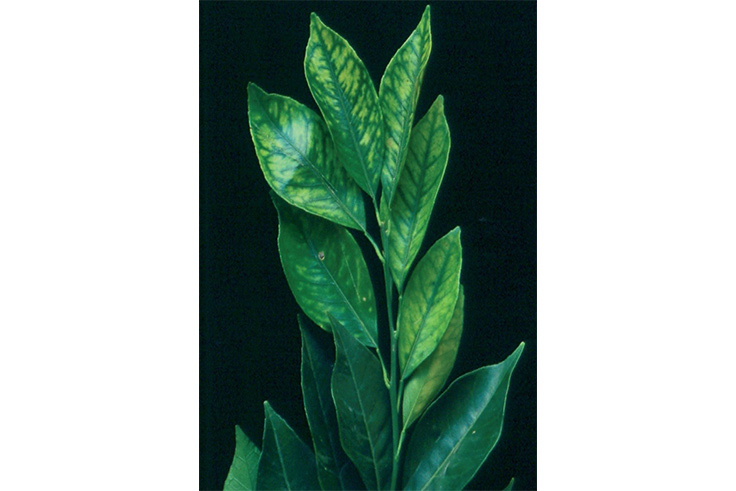
Manganese is a micronutrient involved in numerous biological processes such as photosynthesis, breathing, nitrogen assimilation and acts as a binding element and as a redox system in different enzymes. It plays an important role in maintaining the structure of chloroplast, in pollen germination, in the growth of the polynic tube, in the cell elongation of the root and resistance to pathogens thereof.
Symptoms are yellowish green or yellow spots in the internerval spaces of the leaf, both in young and old leaves, remaining the dark green ribs. Severe deficiency develops chlotic spots that are subsequently necrotizing.
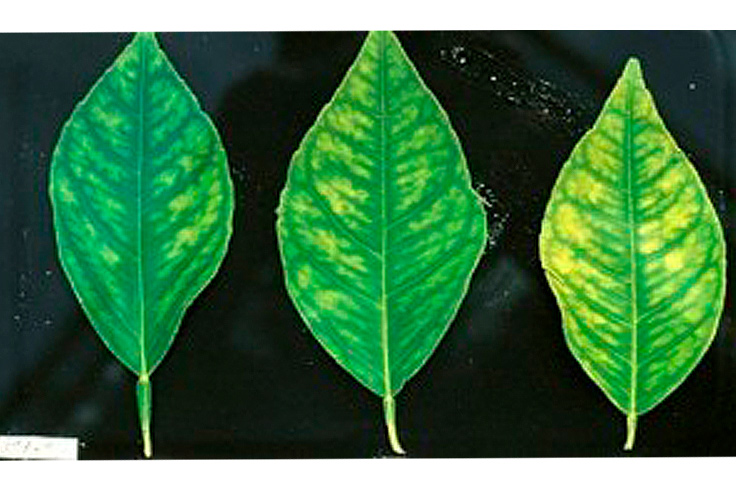
Magnesium is a macronutrient whose main function is its role as the central atom of the chlorophyll molecule, and said pigment carries out the process of photosynthesis. He is also responsible for protein synthesis, as well as being involved in numerous enzymatic reactions and in regulating the pH and ion balance of the plant cell.
The lack of this element is manifested by a yellowing of the leaf that does not reach the entire surface, leaving an inverted V or a triangle based on the petiole, filled with green with its vertex pointing towards the apex of the leaf. The most affected leaves are the oldest and are commonly found during autumn and winter.
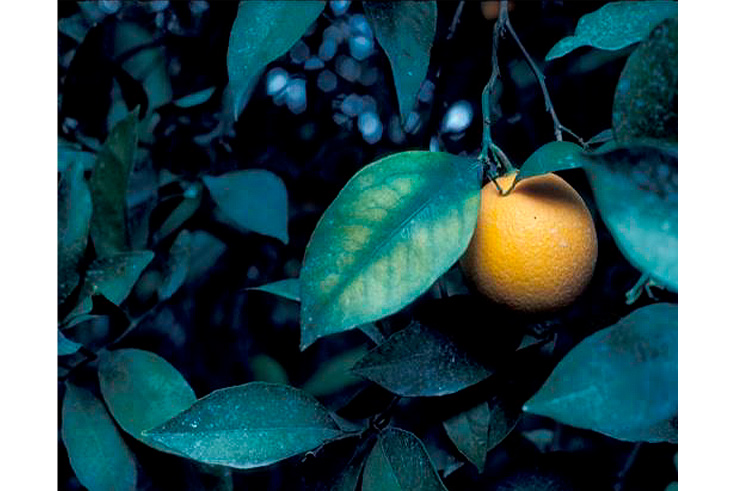
In general, these deficiencies generate: smaller, narrower and sharper leaves; have less developed shoots, shortening internodes, thinning stems and causing widespread defoliation; In addition the harvest is reduced and the fruits are smaller, with fine bark, dense pulp, little juice and low concentration of soluble solids. In short, it impairs the development and overall productivity of plants.
Therefore, from Agrométodos, we market products that allow us to be more efficient and effective in contributing to the nutrition of our crops and thus be able to optimize the different resources.
For this reason, we have our VERSATILE TECHNOLOGY: THE LANZADERA® SYSTEM, a range of products including the Lanzadera® 3 (Zinc, Manganese and Magnesium).
How does the Lanzadera®System work?
The exclusive Lanzadera® System comprises negatively charged nano-particles that come from natural organic compounds, known as “nano-clusters”. These nano-particles wrap around or “sequester” the cation, creating electrostatic stabilisation between the “nano-clusters” and the nutritional cations, known as Van der Waals force, which protects the cation against unwanted reactions with other elements that are present.
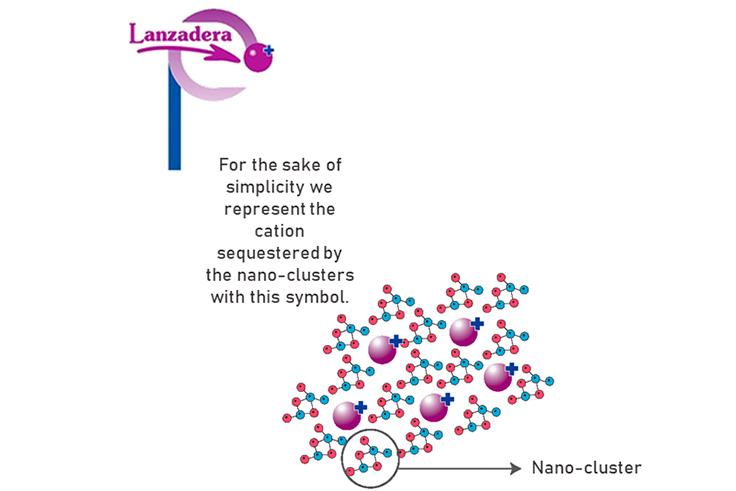
The Lanzadera® System is a powerful natural chelating agent, which forms the basis of the various products in the Lanzadera® range.
Application of Lanzadera® System
The versatility of Lanzadera® 3 lies in the fact that they can be applied in two ways, either via foliar or irrigation application, where, thanks to our technology, they are equally efficient and effective. Our product has different action mechanisms and benefits, depending on the application.
Lanzadera® System: foliar application
The “nano-clusters”, by structural analogy, couple to the outer part of the plant wall (they dock there, much like a boat in a port) and, without penetrating through the pores like conventional chelates, they prepare to deliver the transported cations.
The delivery process is down to a natural phenomenon called “thermal vibration”, characterised by a “pulsing” effect, and which consists of a constant contraction and expansion of the plant surface’s pores and the organic molecules that are wrapped around the mineral ion. In this random process, whereby the contraction is synchronised with the expansion of the adjacent pore, the cation is propelled into the plant. Once the cation has been delivered to the plant, the “nano-clusters” are incorporated into the plant as food, as they are biodegradable organic molecules.
Lanzadera® System: irrigation application
The Lanzadera® System, because it consists of nano-particles, has a greater specific surface, as well as high surface energy, and is able to move quickly through the soil solution, transferring nutrients to the inside of the roots, without the organic chelate agent (“nano clusters”) entering the plant.
Once the cations have been delivered to the plant, the negatively charged “nano-clusters” behave like the exchange complex, meaning that they are able to absorb nutritional elements from the solution in the soil, which increases the size of the exchange complex, making a larger storage of the soil and preventing these elements from being lost by washing or leaching.
The exchange complex acts as storage, where many of the nutrients for the plant are reversibly attached, and they are in balance with the soil solution. Thanks to this balance, not only the ions from the soil solution are available to the plant, but also those absorbed by the exchange complex found in the solid-liquid state. The potential of soils to absorb and exchange cations is called the Cation Exchange Capacity (CEC).
By increasing the CEC we increase the bio-availability of nutrients in the soil, thanks to the Lanzadera® System’s ability to reload. The same happens with the micronutrients present in lower proportions in the soil, increasing their bio-availability. This increase in the bio-availability of nutrients in the soil is also reflected in an increase of nutrients in the leaves.
But, how long do the organic nano-particles of the Lanzadera® System continue performing these functions in the soil? It very much depends on the microbial activity of the soils to which the product is applied, because as an organic product, it is a powerful stimulator of microbial activity in the soil, it lasts for approximately 21 days.
The benefits of Lanzadera® System
Ultimately, our Lanzadera® 3, presents a versatile technology that can be used both foliar and irrigation providing the plant efficiently and effectively Zn, Mn and Mg. In addition, when applied via irrigation, it behaves like the exchange complex and moves through the soil solution, giving the following benefits:
- -An increase in the exchange complex, increasing the soil’s storage and preventing losses via washing or leaching.
- -A greater bio-availability of nutrients in the soil.
- -An increase in the activity of the micro-organisms in the soil.
It is a product authorized as an input for use in Organic Agriculture.
Agrométodos R&D&I Department

